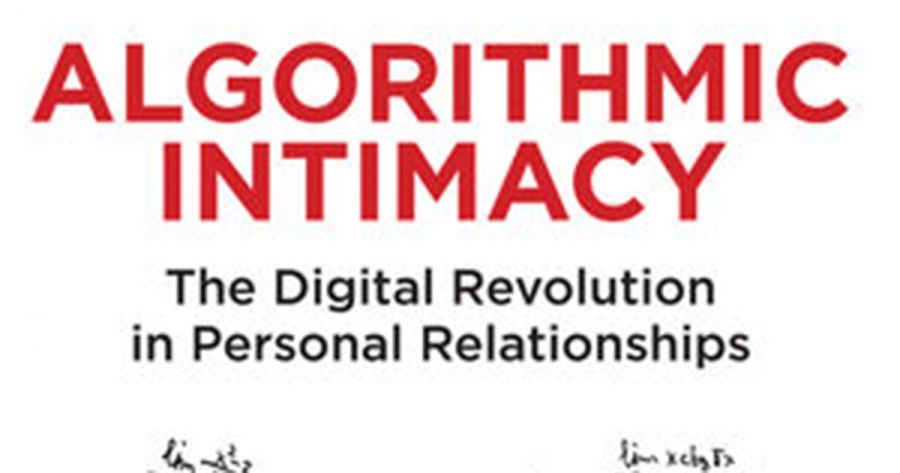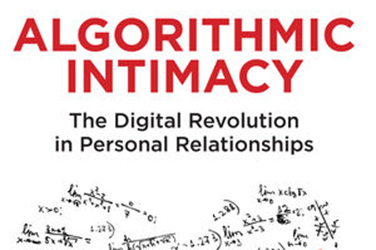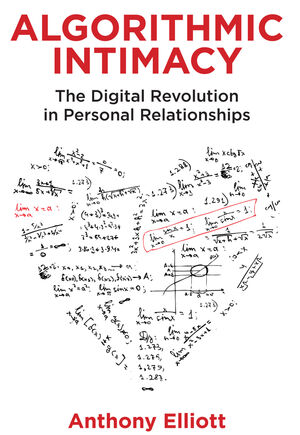
- Free Article: No
- Contents Category: Science and Technology
- Review Article: Yes
- Article Title: Intimate bonds
- Article Subtitle: Novel worlds of experience
- Online Only: No
- Custom Highlight Text:
In May 2021, scientists at Woebot Health, a US-based artificial intelligence company, published a paper titled ‘Evidence of Human-Level Bonds Established with a Digital Conversational Agent’. Reading it back then, I felt like a door had suddenly opened from nowhere. But not just any door: this one led directly to a passage into human inner life and one of its most intimate dimensions: the nature and experience of emotional bonding.
- Featured Image (400px * 250px):

- Alt Tag (Featured Image): Judith Bishop reviews 'Algorithmic Intimacy: The digital revolution in personal relationships' by Anthony Elliott
- Book 1 Title: Algorithmic Intimacy
- Book 1 Subtitle: The digital revolution in personal relationships
- Book 1 Biblio: Polity Press, $32.95 pb, 220 pp
- Book 1 Cover Small (400 x 600):

- Book 1 Cover (800 x 1200):

Algorithmic Intimacy describes three types of technology: relationship tech, therapy tech, and friendship tech. Each is founded on a variant of algorithmic intimacy, which Elliott deftly defines as ‘the artificial field of intimate bonds’.
Relationship tech, Elliott explains, is the application of machine intelligence to human sex lives, relationships, and love in ways that create or feed a desire to quantify human erotic performance and productivity through a range of apps. Therapy tech covers apps, including Woebot, that are designed to support self-expression as a path to self-management and that aim to address conditions ranging from depression and anxiety to negative mood. Friendship tech – the most familiar of the three, having started with Meta’s Facebook platform almost twenty years ago – is manifest in social media platforms that stimulate and simulate human companionship through recommendations, notifications, and feeds engineered by algorithms.
These categories of tech have become all but ubiquitous, according to Elliott. He discusses each at length, illustrated by applications such as Loly, Spreadsheets, Woebot, Relish, Facebook, and Replika. Elliott’s principal agenda, however, is theoretical: to establish ‘a conceptual foundation upon which a theory of algorithmic modernity can be developed and elaborated’. Important human modes of cognition and connection are being managed through our daily interactions with machine intelligence. Social theory aims to make these technologies’ shaping of reality more visible:
The general cognitive orientations suffusing conventional, cohesive, and individualised algorithmic intimacy reconstitute and transform structural reality. Such world orientations are deeply anchored in large organizations and modern culture – profoundly interwoven as they are with the technological architectures, economic logics, and designed affordances of automated intelligent machines.
The style of the book, as this passage suggests, may be a barrier to readers not deeply invested in its academic discourse. However, its insights are relevant to anyone engaging with AI social platforms and well-being apps. Algorithmic intimacy is part of the flywheel of personal data that is gathered in every interaction we have with artificial intelligence. The more data we provide, the more uncannily predictive AI will become.
Which brings me to the question of ubiquity. ‘Digital technologies,’ Elliott writes, ‘are increasingly built into our existence, and significantly built into our relations … and our own sense of internal strangeness.’ But who, I found myself wondering, is ‘we’? How many Australians – from what walks of life, ethnicities, genders, ages, and all other demographics – are using these technologies of algorithmic intimacy? What sensitive data do they hold – including, potentially, data of a kind that was once the province only of government statistics, health practitioners, or academic research? And who, beyond the companies that manage these technologies, could begin to answer?
In the space of AI, the assumption of ubiquity readily aligns with commercial motivations to expand the adoption of these intimate technologies – an expansion measured by the ‘market penetration’ of the apps. Australians may not yet have attained the level of adoption of relationship, therapy, and friendship tech that is evident in saturated markets such as the United States. We may yet have space and time to decide for ourselves about the wisdom of wholesale adoption of technologies like these.
Fundamental concerns are starting to emerge in the more exposed markets. Friendship tech recently erupted in the news with forty-two US state attorneys general suing Meta for allegedly addicting children and teenagers to the Facebook platform using cognitive techniques that stimulate the release of dopamine, such as push notifications and infinite scrolling. Anyone who has found it difficult to ignore app alerts or to stop following a thread knows what is being described in this case. For children and teenagers, whose attention and reward systems are not yet fully formed, the case asserts, manipulations of those systems by Meta’s friendship tech are leading to genuine harms. Further, intimate data trails of the kind that users create when engaging with relationship tech and adjacent technologies, like menstruation trackers in fitness applications, are already enabling the digital pursuit of women for unlawful abortion following the overturning of Roe v Wade.
Anthony Elliott’s book was written before some of these developments, but it lays important groundwork for understanding the conceptual structures underlying these technologies. Algorithmic Intimacy is a wake-up call to consider our own and our children’s responses to algorithmic intimacy, its reward-based enchantments, and the data webs it weaves.


Comments powered by CComment